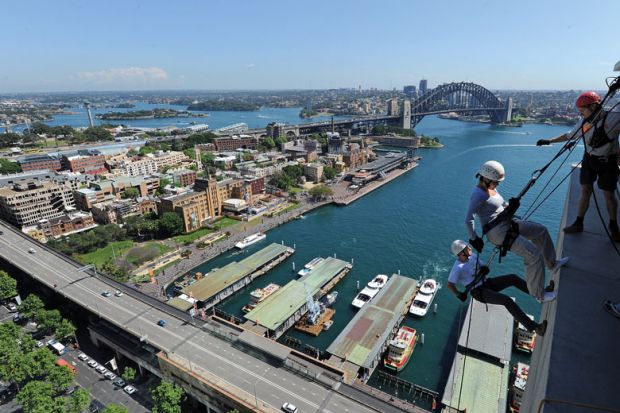Elite Australian universities’ increasingly ambitious inclusivity targets have raised concerns that disadvantaged students will be siphoned off by institutions with little experience in supporting them.
The University of Melbourne has set a 2030 deadline to raise the disadvantaged share of its domestic undergraduates from 10 to 25 per cent. By then, it expects to be spending A$64 million (£33 million) on scholarships and “enrichment” activities.
Other highly ranked institutions have set similar targets. UNSW Sydney says people from disadvantaged backgrounds will constitute 25 per cent of its commencing domestic undergraduates by 2027, while the University of Queensland says they will comprise 30 per cent by 2032.
Marcia Devlin, an honorary professor at Macquarie University, said elite universities’ equity campaigns risked diverting underprivileged undergraduates from financially struggling institutions with well-honed support programmes, merely redistributing enrolments rather than increasing them.
Professor Devlin co-authored a 2022 paper that found supporting disadvantaged students increased the costs of degree delivery sixfold. She said there was no current discussion of principles like “cost compensation” for non-elite institutions that “have done all the heavy lifting to build aspiration and sociocultural capability”.
“The cynics would suggest the sudden interest in disadvantaged students has come about because it is a strong priority for education minister Jason Clare,” she added. “There is likely to be money in it.”
Other experts, however, said that top-ranking universities have an important role to play in equity, and their efforts pay dividends for students from wealthy as well as poor backgrounds.
Sarah O’Shea, dean of graduate research at Charles Sturt University, said this was one of the reasons that foundation year programmes for disadvantaged students had been introduced by the universities of Oxford and Cambridge. “They recognise that they need that diversity,” she said. “[Otherwise] they’re limiting…students from privileged backgrounds from having a bigger picture of the world.”
Professor O’Shea shared concerns that equity was seen as “flavour of the month”. But she acknowledged some elite institutions’ “genuine commitment” to disadvantaged communities. UNSW and the University of Technology Sydney were “doing a lot of outreach” without expecting to benefit directly through additional “bums on seats”.
UNSW says 92 per cent of first-year undergraduates admitted through its Gateway equity scheme proceed to second year, slightly exceeding progress rates among its broader domestic cohort. Some policymakers say equity targets should focus on completion rather than commencements of disadvantaged students.
Andrew Harvey, an education professor at Griffith University, was unconvinced. “If you over-regulate on completions, universities will narrow their admissions and that won’t help anybody.” But too little focus on the “other end of the spectrum” could see universities hoovering up students who “probably should be somewhere else”, he added.
Professor Harvey was also unconvinced of the merits of scholarship programmes which “just take the dux of every school”. He said elite universities could contribute to equity in “distinctive” ways by diversifying their postgraduate enrolments, undertaking more equity research and focusing on “academic leadership more broadly”.
“Splashing money around with scholarships is generally less effective than outreach,” he said. “Just taking market share and picking the top 10 students from every school – that’s not super helpful. [There are things] the selective universities could focus on that other universities can’t do.”
Restricting equity efforts to less elite institutions risked imposing a “ceiling” where disadvantaged students were in effect limited to teaching or nursing courses, he added.





